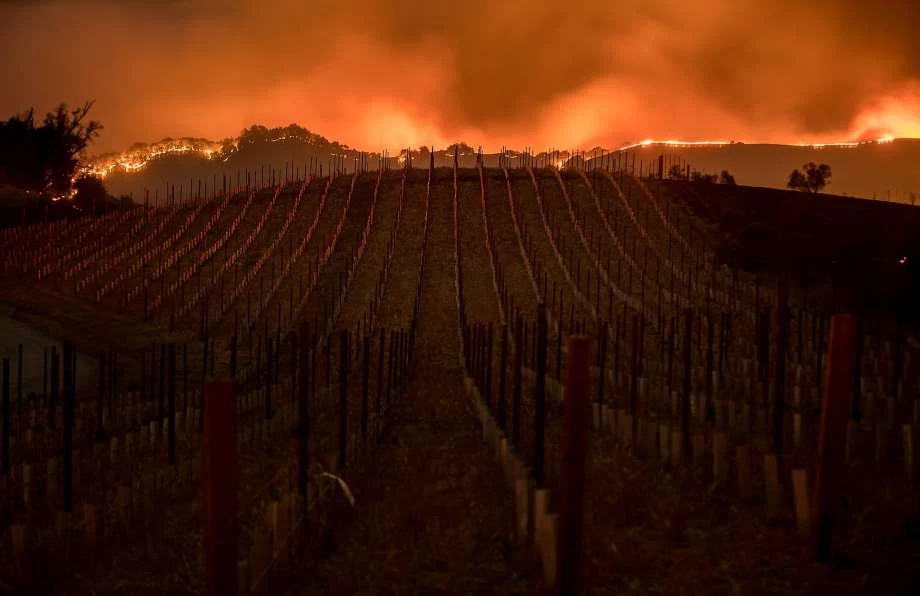Drastic Fire Impact On California’s Wine Industry

October 26, 2017
Many recent and massive California wildfires spread rapidly and relentlessly across Napa, Sonoma, Mendocino, amongst many other counties damaging precious vineyards that made California so famous for they way it revolutionized the world’s wine culture.
Many of the fires have became so enormous and out of control, that fire departments have decided to allow each one to burn out and focus on evacuating residents instead of fighting a senseless battle against the inevitable. However, the devastation has destroyed roughly 3,500 homes and businesses and 50,000 individuals abandoning their homes to seek shelter from the fires. The flames have taken the lives of 36 people with 235 missing people in Sonoma County. This has lead to many authorities labeling the Santa Rosa fires as one of the most deadly fires in state history. Local officials have referred to the the rising death toll as a “fluid number.”
In Napa, as of October 11, 2017 the wildfire has burned out more than 8,000 acres of wine vineyards. The wine industry contributes about $34 billion to California’s economy, without the addition of tourist appeal. This adds up to a huge deficit in California’s budget and overall may set wine businesses back dramatically for the next few years. It is clear that the fires will affect California’s wine industry in a multitude of ways. The largest effect on the vineyards will be the smoke produced by the fires.Smoke introduced to grapevines stops photosynthesis and closes the stomata of the plant. Wine can still be produced regardless of smoke influence. However, as can be predicted, the flavor developed with be smokey and undesirable. In Australia, smoke taint due to the Canberra bushfires in 2003 led to $4 million 2004 $7 million in lost revenue.
Nick Goldschmidt owner of vineyards in Geyserville California responded, “I’ve worked with smoke before… It is not an easy thing to fix. But in my experience, it’s more about contact time. So the key thing is, if you have vineyards near the fire, you’ve got to get the grapes off.”
Additionally, smoke can cause intense negative affects on the wines going through fermentation. Fermentation occurs when yeast consumes sugar and converts it to about half alcohol and half CO2 gas. With the process, the wine has to be vented in order to release the carbon dioxide. With the introduction of fire, venting is nearly impossible resulting in an imbalance of alcohol and sugar, ruining wine production.
Once the grapevines or the actual wine in barrels is exposed to smoke there is no known reversal process to correct or better the tainted grapes. It is for this reason that fires are so dangerous when introduced to wine production and even more so because of the drastic effects wine has towards California’s economy.